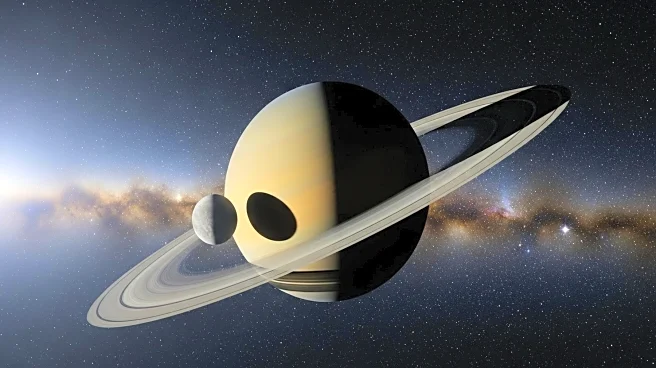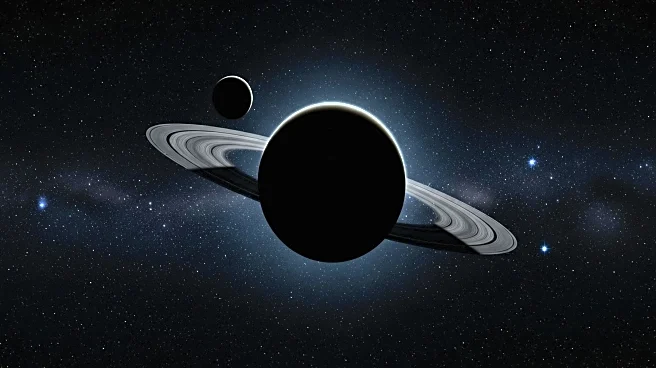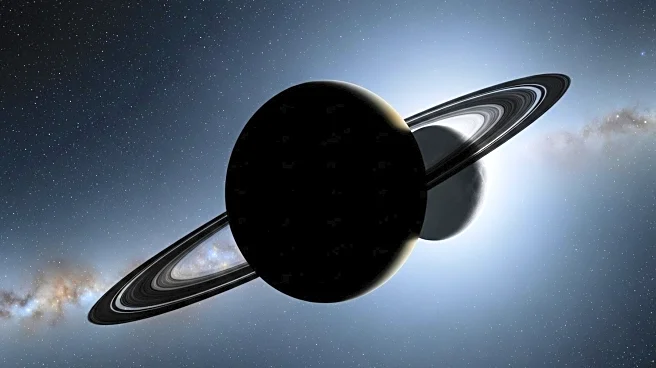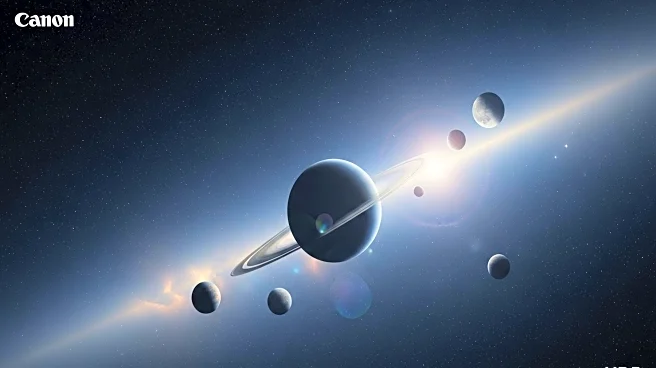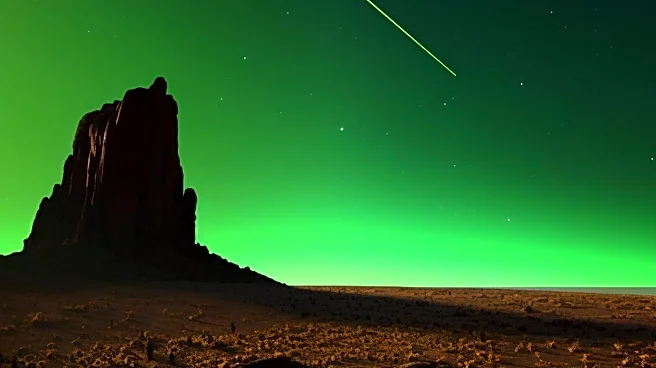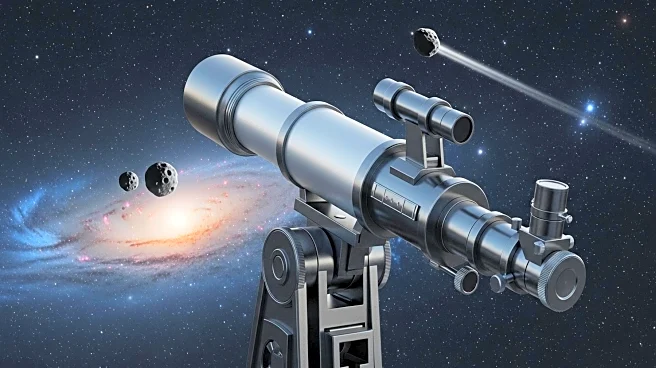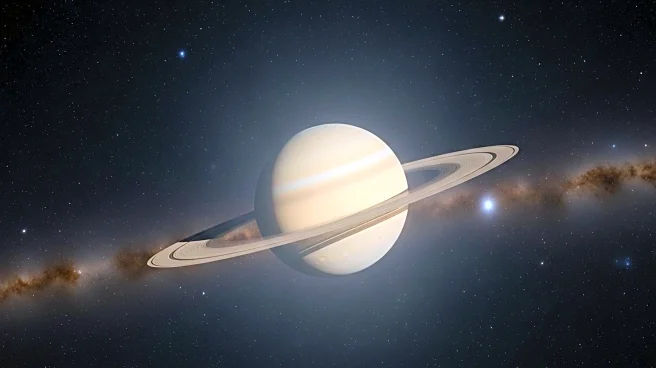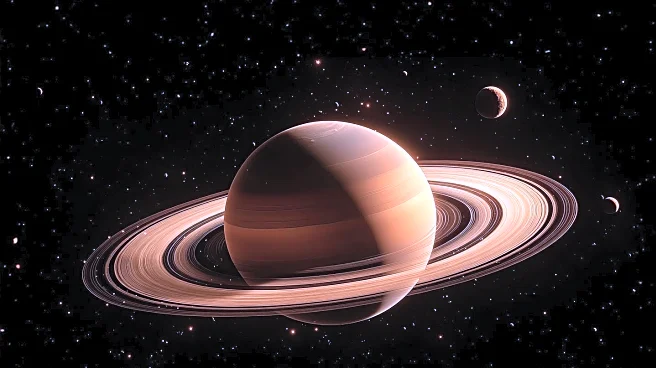What's Happening?
On September 4, 2025, astronomers will have the opportunity to observe Titan, Saturn's largest moon, as it transits across the planet. The event begins with Titan's shadow appearing at the northeastern limb of Saturn at 1 A.M. EDT, taking approximately 25 minutes to fully emerge. Titan itself will start its partial transit across Saturn's northern polar region around 5 A.M. EDT. The shadow transit lasts about two hours, concluding by 5:15 A.M. EDT, while Titan's transit ends 15 minutes later. Additionally, the tenth-magnitude moon Tethys will also transit Saturn, although its shadow may be indistinguishable to visual observers.
Why It's Important?
This transit provides a unique opportunity for astronomers and enthusiasts to observe the dynamics of Saturn's moons and their interactions with the planet's rings. Such events are crucial for understanding the gravitational influences and orbital mechanics within the Saturnian system. Observations can contribute to ongoing research and enhance our knowledge of planetary systems, aiding in the development of models that predict celestial movements and interactions.
What's Next?
Astronomers will continue to monitor Saturn and its moons for future transits and other phenomena. These observations can lead to new discoveries about the composition and behavior of Saturn's moons. The data collected during such events can be used to refine existing models and theories about planetary systems, potentially influencing future space missions and research initiatives.
